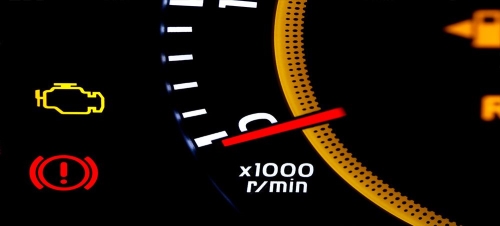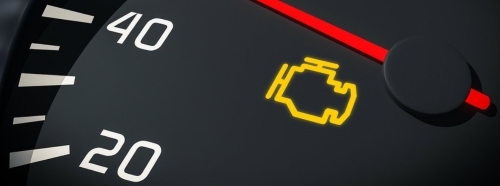- Home
- Shop
-
Engine & Drivetrain
- Radiators, Fans, Cooling Systems & Components
- Exhaust, Headers, Manifolds Mufflers & Components
- Fuel Systems & Components
- Heating, Air Conditioning & Components
- Air Filters, Oil Filters & Intake Systems
- Electronic Control Modules, Ignition & Distributors
- Cranks, Pistons, Oil & Components
- Cams, Timing & Valvetrain
- Clutches, Flywheels & Components
- Switches, Relays, Wiring & Components
- Oxygen Sensors & Components
- Engine & Transmission Assemblies
- Other Engine Parts
-
Brakes, Suspension & Steering
- Brake Discs, Pads & Calipers
- Shocks, Struts & Components
- Control Arms, Thrust Arms & Components
- Wheel Hubs, Bearings, and Components
- Tie Rods, Steering Racks & Components
- Axles, Axles Carrier, Driveshaft & 4WD
- Power Steering Pumps & Components
- Air Suspension Components
- Other Brakes, Suspension & Steering Parts
- ABS Pump & Components
-
Engine & Drivetrain
- Blog
- Catalog
- Contacts US
- Compare: 0
Product
Categories
Select a vehicle to find exact fit parts
Check Engine on the dashboard: causes of the indicator activation and ways of troubleshooting
Check Engine is an indicator that signals failures in the engine or related systems performance. In modern vehicles it informs about ignition system or automatic transmission failures, change in the engine rpm for a certain period or the combustion mixture and so on.
In the normal operation mode when all the systems under its control work normally, it flashes when you turn the ignition key and should go off after the engine start. But if the light is constantly flashing or starts to unexpectedly blink when driving, you need to check certain systems and sensors. Sometimes you can eliminate the fault on your own. But if the measures were taken and the Check Engine continues to signal failure, you will need help of professionals.

9 causes the Check Engine light flashes
1. Using low quality fuel. In this case the Check Engine light usually starts flashing right after filling up. You can resolve the issue only by switching to better quality fuel.
2. Fuel supply system disintegration. Sometimes the light flashes when air gets into the fuel system for some reason, for example, if the gas cap is not tight.
3. Oil level decrease. If the failure signal appears only at the engine heating, there may be a leak in its lubricating system. In this case thoroughly examine the underbonnet space, check for oil streaks on the engine case. If you find a leak, eliminate it.
4. Fuel pump failure or clogging of the fuel filter. To check their operation, it is necessary to measure the pressure in the fuel rail with a pressure gauge. If it is below 3 atmospheres, faulty elements of the fuel supply systems have to be repaired or replaced.
5. contamination of the fuel injection system elements. Throughput capacity loss of the fuel injection nozzles has a negative impact on the engine performance, which is indicated by the trip computer. The solution in this case is cleaning the components. It can be done independently with the use of special additives or entrusted to professionals.
6. Misfire in one of the cylinders. You can check for spark in the cylinder with the help of a multimeter or a special spark tester with a piezo element. If there is no spark, you will need to carefully diagnose such components as the crankshaft sensor, the ignition module, coil, distributor and the spark plugs, high voltage wires and the engine control unit.
7. Spark plugs failure. Examine them. Traces of oil or fuel in the thread area, carbon fouling on the spark plug, dark brown or yellow spots on the electrode or insulator surfaces.
8. Failure of the oxygen sensor. Is quite often that the Check Engine signals specifically about its fault. Sometimes a sensor failure can be indicated by physical signs, like a large amount of soot or dirt on its surface. The faulty sensor has to be replaced.
9. Catalytic converter malfunction. One way to check it is measuring the backpressure in the output with a pressure gauge. It must not exceed 10 kPa at idle and 20 kPa at 2500 rpm.
When you must stop driving
Sometimes flashing of the Check Engine light is not critically dangerous. In such cases the driver can reach a nearest service station for a more thorough diagnosis. But sometimes driving in the car with the flashing Check Engine light is strictly prohibited.
You must immediately stop the car if:
- One of the following warning lights flashes together with the Check Engine light:
- engine overheating
- exhaust gas control
- oil level
- coolant level
- You notice the following signs:
- engine has started vibrating
- powertrain rpm surge during idle
- you feel burning smell in the cabin
- The engine rpm does not rise above certain numbers, while the light is blinking.

Conclusion
If the Check Engine light starts flashing during driving, stop the car and shut down the engine. Then open the bonnet, check the operation of the systems mentioned above and try to solve the issue. If your actions are unsuccessful, estimate the warning light nature and decide if it is possible to move on. Reach the nearest service station or contact the appropriate service for help.
Anyway, the Check Engine light activation should not be ignored. It is not only dangerous but can also entail costly repairs. Pay proper attention to warning signals, resolve minor issues in time and your car will serve you for a long time.




1984375259.png)
135111072.png)
1235885726.png)
732991495.png)
148086775.png)
There are no comments